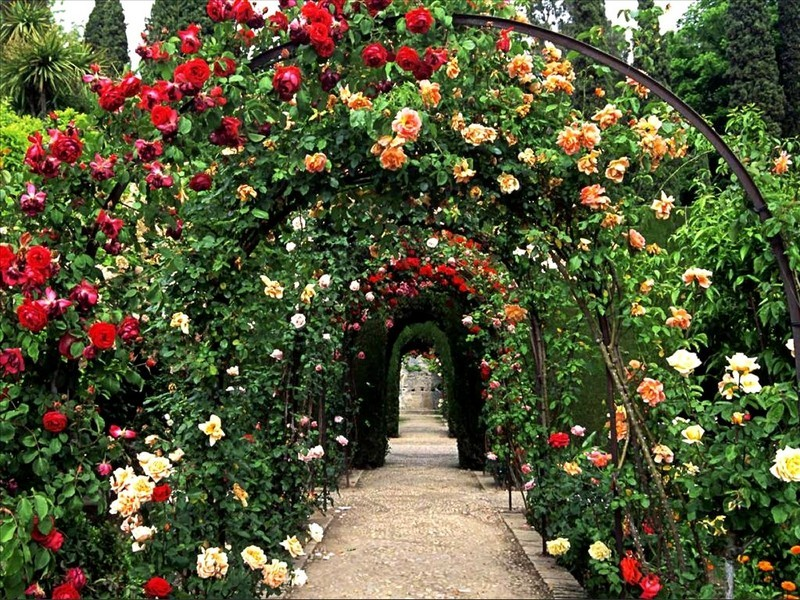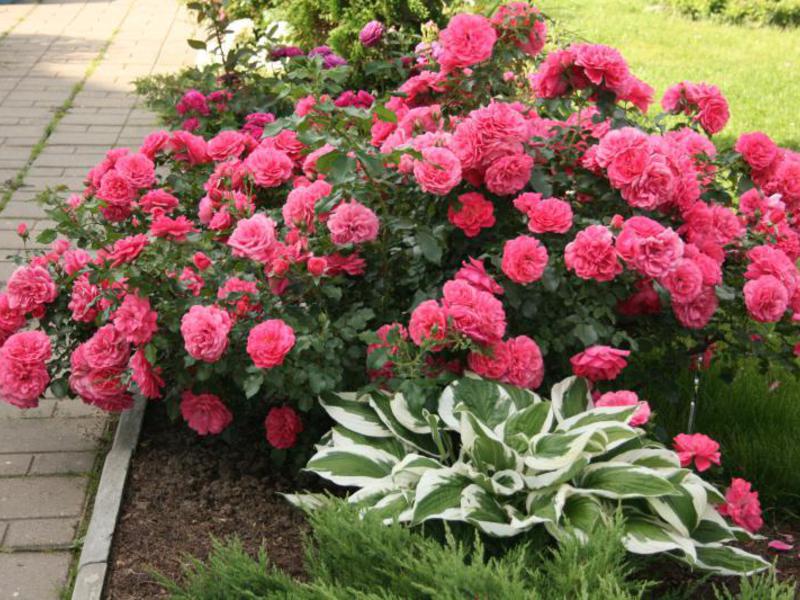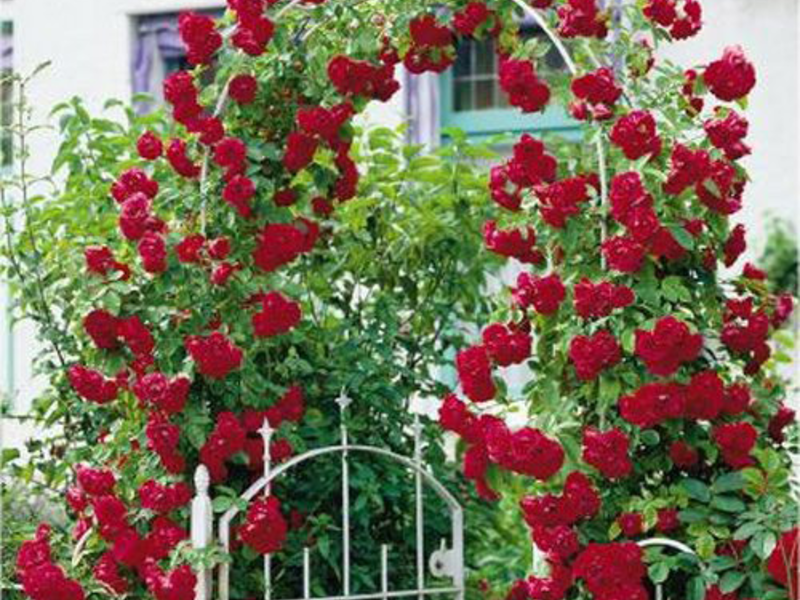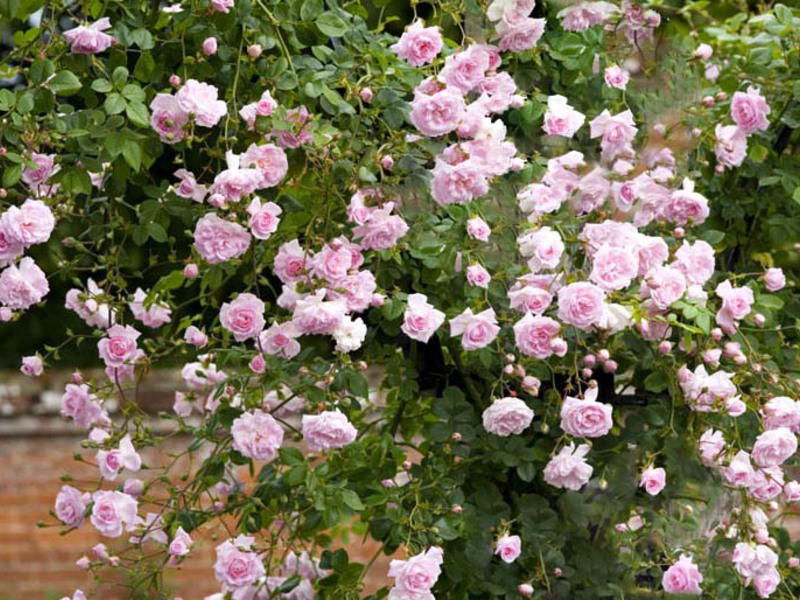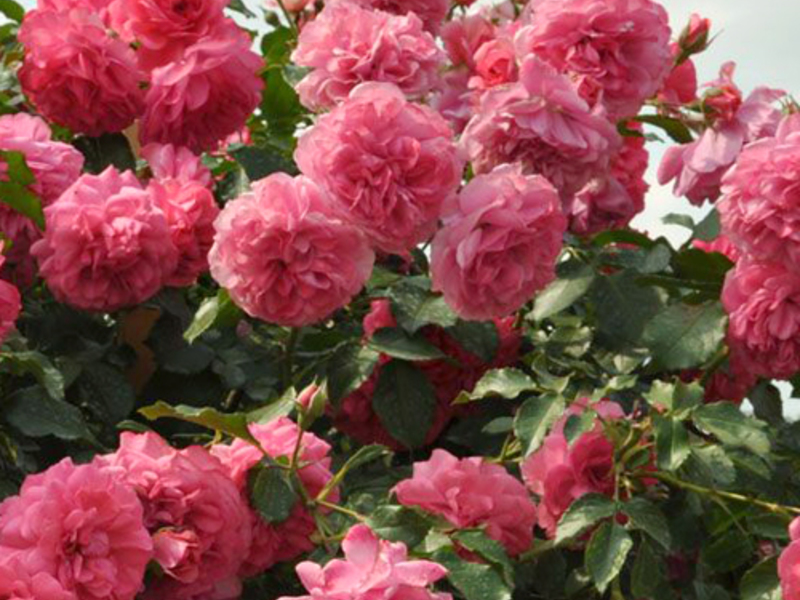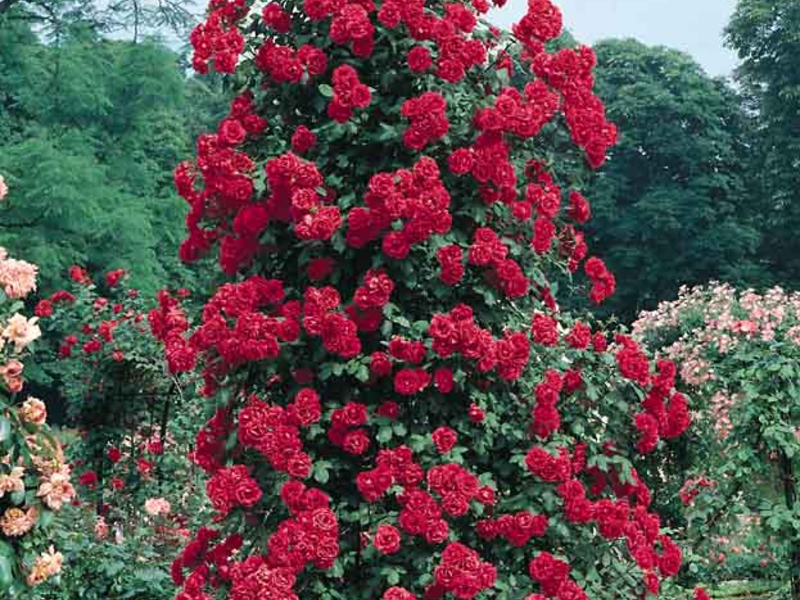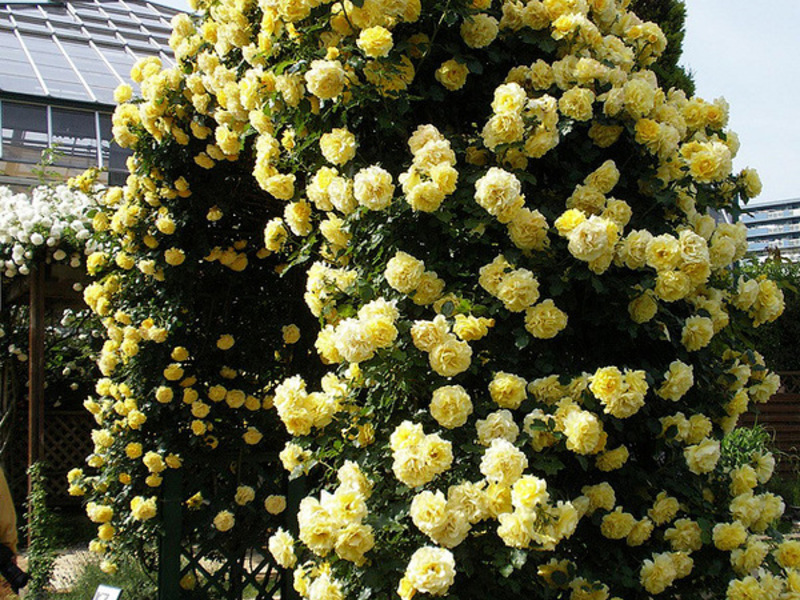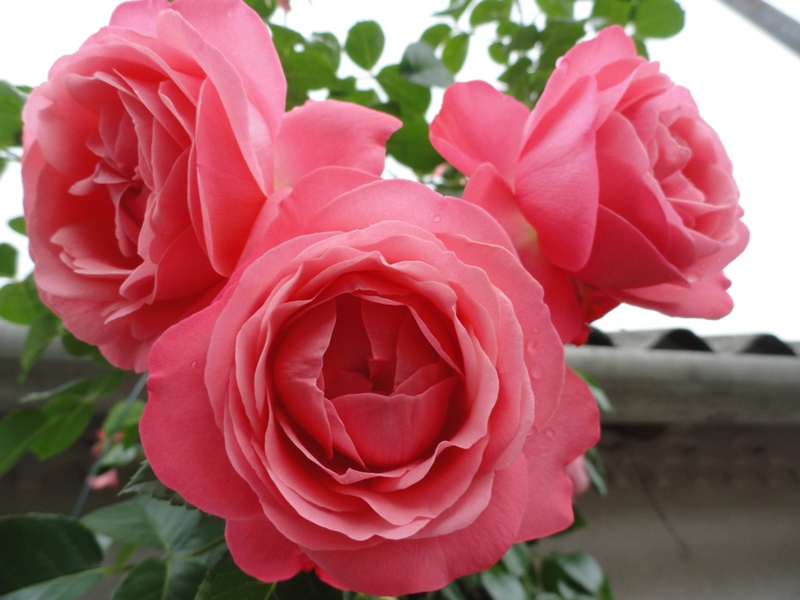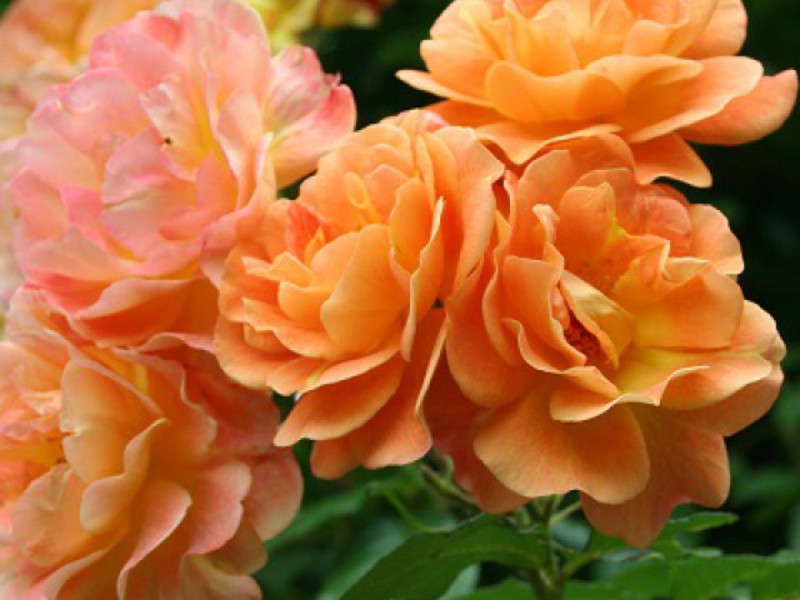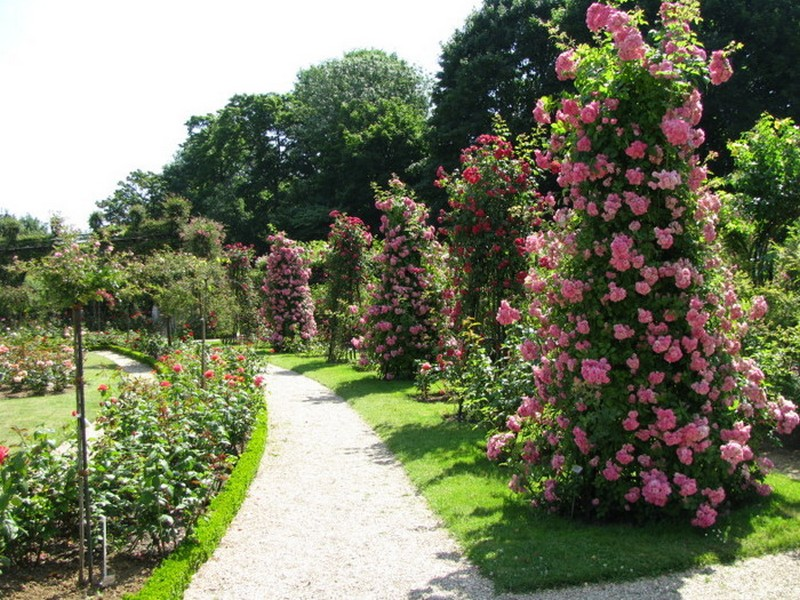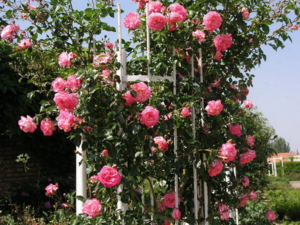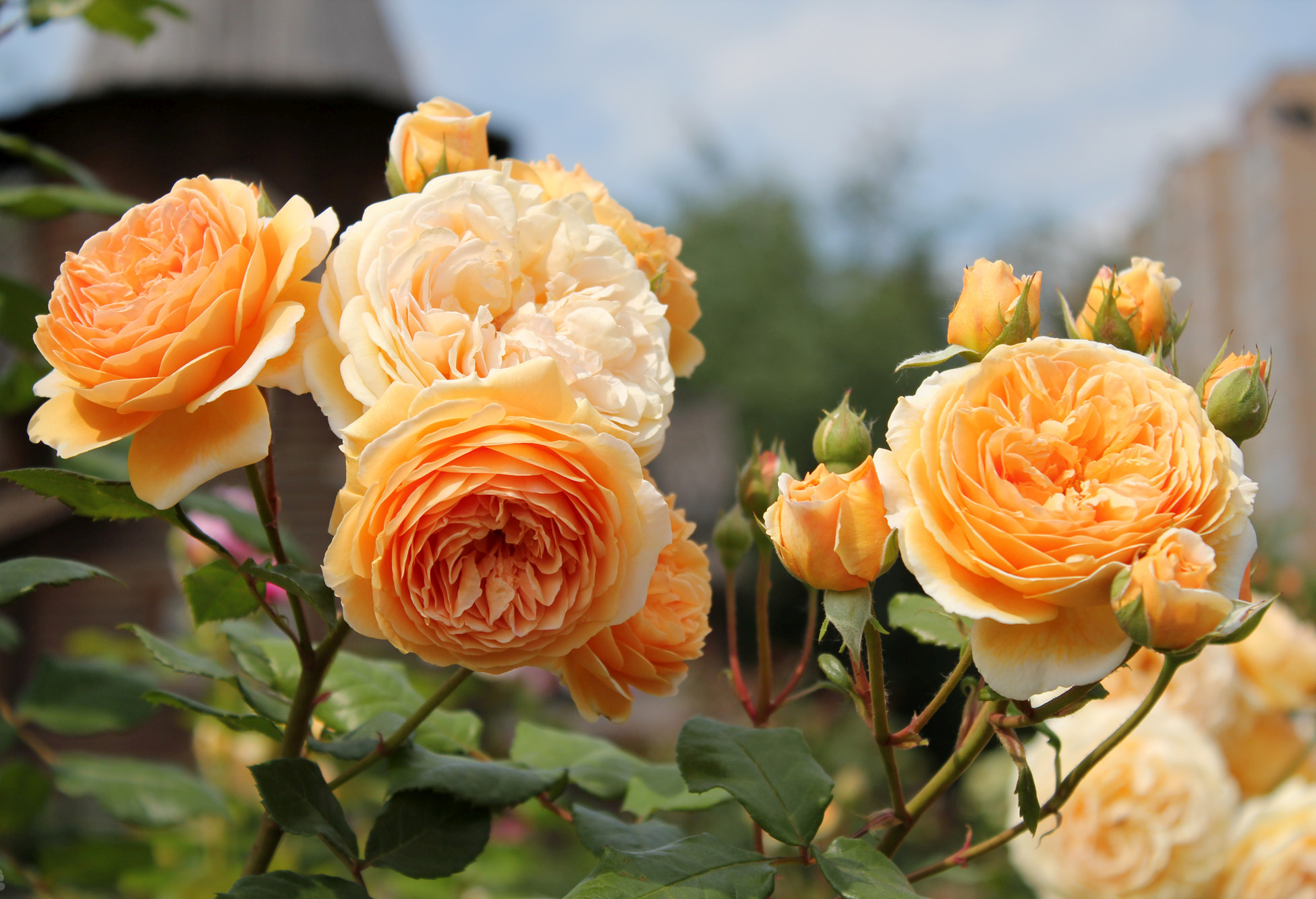You can decorate even the most unsightly corner of the garden and at the same time add a piece of light romance to it with the help of climbing roses. These unusual, beautifully flowering climbing plants please the owners with their flowering almost throughout the season. But for it to be flawless, climbing roses require proper planting and special care. We will tell you about all the intricacies and nuances of growing climbing plants in this article.
Content
Curly rose: planting and care, photo
Any plant in the garden or in the summer cottage requires care. Particular attention must be paid to some flowering crops, which include climbing roses.and with long branches... Abundant and long-lasting flowering of this beautiful plant can only be achieved if all the rules for planting are followed, careful care throughout the year, timely pruning and protection from winter frosts and pests.
Choosing a landing site
 Roses are light-requiring, therefore, with a lack of sunlight, fresh stems will develop poorly and will bloom only in the next season. However, the midday sun can burn the plant. The place for planting roses should be such that during the hottest hours the bushes were in partial shade... The best option would be a site that the sun heats up in the morning. In the morning, the dew from the leaves will quickly evaporate, and the viral diseases of the roses will not be afraid.
Roses are light-requiring, therefore, with a lack of sunlight, fresh stems will develop poorly and will bloom only in the next season. However, the midday sun can burn the plant. The place for planting roses should be such that during the hottest hours the bushes were in partial shade... The best option would be a site that the sun heats up in the morning. In the morning, the dew from the leaves will quickly evaporate, and the viral diseases of the roses will not be afraid.
Curly roses are also finicky. They do not tolerate drafts well, and therefore the corners of buildings are not suitable for planting them. Do not plant them in areas where roses have already grown and in wetlands. It is best to choose a bed with a slope so that water does not stagnate in the ground. The roots of the plant reach about two meters in length, so if the moisture content of the soil is constantly very high, flowers are planted on a hill.
Climbing shrubs for decoration can be planted along the walls of the building... So that their roots are not depleted, the distance from the wall should be at least 60 cm. In any case, the planting of climbing roses should take place near some kind of support. These can be fences, nets, pergolas, arches, walls, or specially crafted pillars or cones.
When to plant climbing roses?
In areas with a temperate climate, shrubs are planted in open ground in late September - early October. Within two weeks they will give the first roots and before the onset of cold weather they will have time to get stronger. In the spring, the root and aerial parts will begin to grow actively, the bush will become lush, gain strength and bloom. However, in the northern regions, climbing roses are best planted in the spring, since the bushes planted in the fall will not have time to adapt, and can freeze out in winter.
Plants, which were planted in spring, are delayed in their development by about half a month and require increased attention. Before planting in the ground, such seedlings are cut into three buds.
Selection and processing of seedlings
Beautiful curly rosals can only be obtained in the presence of healthy seedlings... Their viability and quality is indicated by the appearance of the trunk. It should only be whitish-green, not gray or brown. The acquired seedlings are not planted in open ground immediately. They must first be prepared:
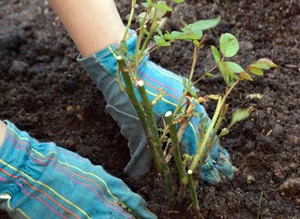 Soak the plant completely in water for a day.
Soak the plant completely in water for a day.- Shorten healthy roots by 15 cm, and cut off the crushed and weakened ones completely. A small bunch should remain.
- Shorten strong branches of roses by 15-20 cm, and remove weak ones completely.
- Sprinkle the cut points with crushed charcoal.
- Treat the roots with Heteroauxin or Kornevin.
Thanks to this preparation for landing the bushes will begin to actively grow, and during the flowering period, many buds are formed on them.
Soil preparation
Climbing roses love fertile, loamy, well-drained soil. Only heavy clay and sand are not suitable for growing them. Therefore, clay areas are diluted with sand, and sandy areas - with clay. The more suitable in chemical composition and crumbly soil will become after adding a small amount of lime to it.
When digging, the fertility of the soil can be increased by adding to it:
- phosphate fertilizers;
- humus;
- humus;
- phosphorobacterin (special soil bacteria).
The soil is prepared for planting climbing shrubs in advance. It must be dug up several times at the end of summer, and then loosened up in spring.
Landing features
The roots of a young plant should not experience a lack of space, so the holes for them should be free enough. The optimal depth is 60-65 cm. In order for the root system to develop freely, the distance between the plants must be at least one meter.
When planting roses in the hole, you must observe the following recommendations:
 About five kilograms of the nutrient mixture is preliminarily introduced into each hole. You can use peat compost.
About five kilograms of the nutrient mixture is preliminarily introduced into each hole. You can use peat compost.- The roots of the roses should be free in the hole. The voids between them are necessarily filled up.
- The root collar of the plant is covered with soil by about 10-12 cm. This will help to protect it from frost in addition to insulation.
- The planted rose is watered with a bucket of warm water.
- The remaining space is covered with a mixture and slightly compacted.
The support to which the rose will be attached in the future should not interfere with the development of the root system. If the support is portable, you can use special tripods, trellises or trellises. The pole and tripods can be made by yourself by knocking down for this wooden beams from 2.5-3 meters high... They will look gorgeous as arch supports, on both sides of which two bushes are planted. By the end of the second year, they will be completely entwined with curly roses with delicate flowers (pictured).
Caring for planted bushes
The main rules for caring for climbing roses include regular watering, timely feeding of plants, garter and pruning of shoots, sheltering bushes for the winter and protecting them from pests and diseases. Let's consider each point in more detail.
Watering and feeding
Climbing shrubs do not like excess moisture and tolerate drought without problems. It is recommended to water them once a week with a small amount of water, which should not be cold. Overmoistening plants can lead to viral diseases and poor appearance of the bushes.
Fertilizing roses is best manure or other organic fertilizers, alternating them with mineral dressings. It should be borne in mind that young plants at first will be sufficiently fertilized when planting soil. Therefore, it is not necessary to feed them too often.The next year after planting, caring for climbing roses will consist of fertilizing with fertilizers of the following composition:
- fresh black soil;
- humus;
- phosphorus complementary foods;
- humus.
With this mixture, the soil in which the roses grow "revives" in spring and autumn. If it is not possible to prepare the composition yourself, then you can buy ready-made fertilizer for roses.
Pruning shoots
All climbing roses are divided into two types, each of which requires some trimming:
- In shrubs flowering from June to July, after planting, all shoots are shortened. There should be shoots 30 cm long. New stems that appear during active growth are cut off as needed to form a beautiful bush.
- Roses with a small number of basal shoots, which appear only on old branches, are shortened to 30 cm in the first year. The next year after planting, all old shoots are cut out completely.
Garter of climbing roses
After pruning, new branches will begin to grow, which need to be guided, giving the bush the intended shape. To form more buds, individual lashes are tied. At the same time, it is undesirable that they are directed only upward, since with this arrangement, the buds are formed only at the tops.
For lush flowering bushes there are several ways to tie:
- Shoots can be fanned out, leaving the side branches not tied up. They will not interfere with each other, freely extending to the sides and up.
- The main shoots are arranged horizontally, tied to a support. After a while, they will give new side branches, which will grow upward, forming a cloud of beautiful flowers.
- In order for the curly branches to braid an arch or a pillar, they are tied up in a spiral, twisting around the support.
Whichever way the bush is formed, one should not neglect the care of climbing roses and preparing them for winter.
Protecting roses from frost
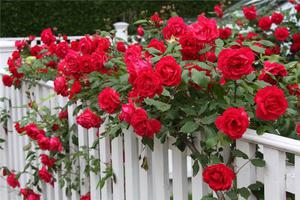 Before you start hiding, the bushes need to be prepared. To do this, remove the leaves from them, cut out old loops and weak shoots. As a result there should be 11-12 healthy and strong shoots... All work is carried out in dry weather.
Before you start hiding, the bushes need to be prepared. To do this, remove the leaves from them, cut out old loops and weak shoots. As a result there should be 11-12 healthy and strong shoots... All work is carried out in dry weather.
The way a climbing plant hides depends on the region in which it grows. In regions with a mild climate, the branches can not be removed from the support, first covering them with spruce branches, and then wrapping them in film.
In areas with severe winters, the plants are completely removed from the support. First, they are collected in a large bundle and tied. After the air temperature drops to -5C, they gently tilt to the ground, where they are fixed with wire or pegs. The base of the bush is sprinkled with a mixture of peat and soil, and the shoots are covered with spruce branches. From above everything takes cover thick film or agrofiber.
It is very important to remove the shelter on time in the spring. Otherwise, in a humid environment and without fresh air, the roses may suffocate and start to hurt. On open bushes, shoots are freshened and tied to supports. The first feeding is recommended only after the appearance of young leaves.
Diseases of climbing roses
In case of errors in the care and incorrect location of the bushes on the site, they may be affected by the following diseases:
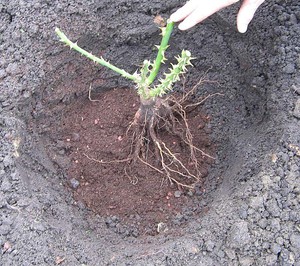 Black spot occurs on young shoots in warm weather and heavy rains. You can recognize it by the black and brown spots on the leaves, which have a yellow halo. All affected leaves are removed from the plant and burned. Feeding is made with phosphate and potassium.
Black spot occurs on young shoots in warm weather and heavy rains. You can recognize it by the black and brown spots on the leaves, which have a yellow halo. All affected leaves are removed from the plant and burned. Feeding is made with phosphate and potassium.- Powdery mildew progresses with increased humidity. If a white bloom appears on the leaves and stems, and the flowers do not bloom, then this indicates that the plant is sick. The bushes are processed with iron and copper sulfate, all the affected areas are cut out, the soil is dug up.
- Bacterial cancer can be recognized by the growths and bumps on the roots. They are soft at first, but darken over time. The plant begins to dry out and dies.The affected roots are cut out, and the remaining ones are treated with copper sulfate.
When treating climbing roses, it must be remembered that all cut off affected areas must be burned... Otherwise, they can infect other plants.
Proper planting and care is the key to the abundant and long-lasting flowering of these royal flowers. Those who decide to grow climbing roses on their site will never regret it.
